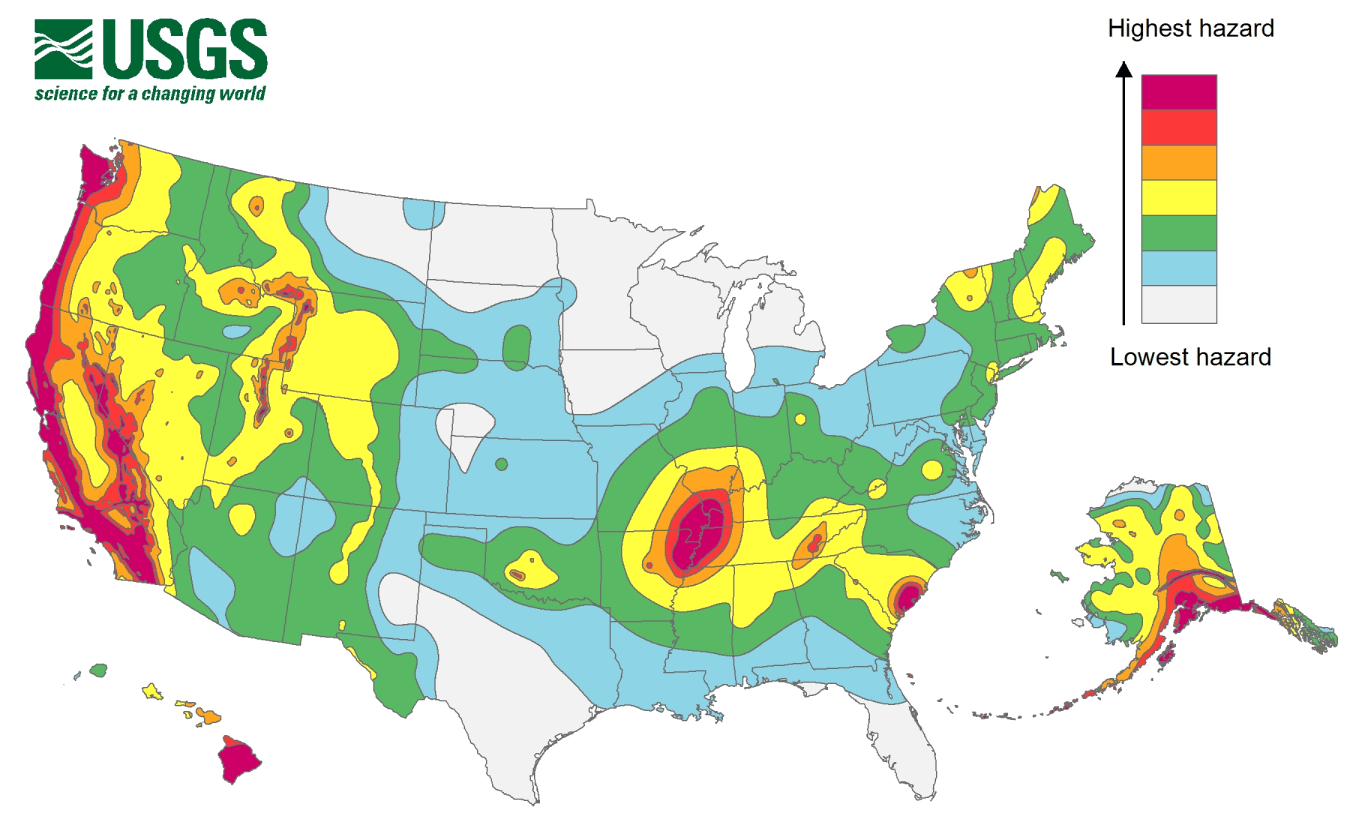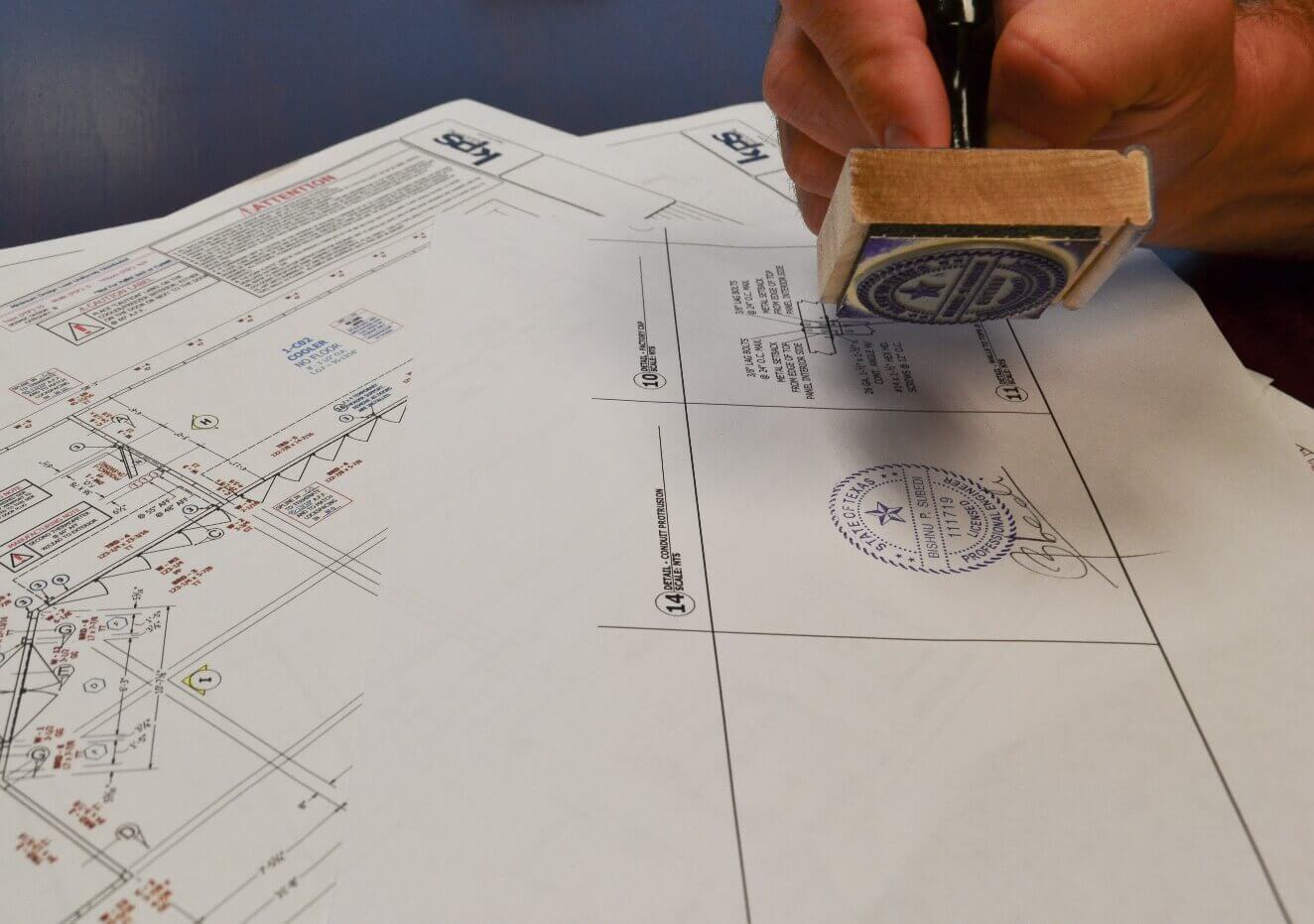
When designing a walk-in unit, there are a variety of engineering and local building code requirements based on the geographical location of the unit including hurricane, seismic and snow zones. It’s crucial to prioritize the safety and protection of assets, including walk-ins. Planning for wind, snow and seismic locations starts with the design phase of a walk-in. By implementing appropriate design measures, you can ensure that walk-in units meet the necessary snow, wind and seismic requirements.
In this blog, we will review various considerations for designing a walk-in unit to prepare for snow, wind and seismic elements.
Engineering Considerations for Snow, Wind and Seismic Activity:
Based on geographical locations there are a variety of engineering requirements to consider from site considerations to material selected.
Site Considerations:
Factors at the site also play into engineering and design considerations, including:
- Elevation
- Proximity to Trees and other Structures
- Accessible Terrain
Material Selection:
Using durable and appropriate construction materials is a way to engineer and design a walk-in for extreme weather conditions. The selection of materials for walk-ins in wind, seismic or hurricane zones are intentional. There are a variety of construction materials that go into the designing and manufacturing of a walk-in. For example:
- Structural Steel and Tie-Down Angles: It is an engineering requirement to use structural steel and tie-down angles to provide additional strength for outdoor units.
- Standing Seam Roofs: Standing seam metal roofs are best for climates with high snow loads as they can withstand heavy weight and provide a weather-tight seal. Explore Outdoor-Equipment-Enclosures and FAQ’s for Standing Seam Roofs, to learn more.
- Membrane Roofs: Membrane roofs create a seal tight barrier that works to prevent build up from ice, snow, rain or other debris. Compare Roof Options for Outdoor Walk-ins to evaluate the roof type that best suits the location, function and aesthetic that fits the desired environment.
- Reinforced Walls and Roofing: Reinforced walls and roofing materials can withstand high wind loads. Materials such as concrete, reinforced steel or impact-resistant panels can enhance structural integrity.
- Sealed Joints and Weatherstripping: Install weatherstripping and seal all joints to prevent water infiltration, which could lead to damage or spoilage of stored goods.
- Impact-Resistant Doors: Use sturdy, impact-resistant doors with reinforced hinges and latches to withstand the force of high winds and flying debris.
The exponential effect of thermodynamics in the design of a walk-in for extreme weather conditions:
In snow, wind and seismic environments, maintaining proper temperature control becomes challenging. The history of thermodynamics portrays an inevitable fight of warm air intruding into the walk-in, the flow of heat energy increases when the temperature difference is higher, which is highly applicable in these climates/conditions. If heat enters the cooler/freezer it must reside somewhere, this is what creates condensation and ice buildup, which will deteriorate the integrity of the cooler/freezer system. Due to rapid flow of heat energy, proper insulation and implementation of enhanced energy efficiency to protect the inventory must be considered.
- Insulation: Choose high-quality insulation materials that provide excellent thermal resistance to protect from the warmer air from entering the walk-in, as it is traveling at a higher speed due to the science of their relationship. Higher insulation will reduce the amount of heat entering the cooler/freezer system, reducing condensation and ice, therefore extending the life and function of the cooler and freezer. For a comparison of foam options, review the insulation comparison of polystyrene and polyurethane foam.
- Backup Power Supply: Install a backup power generator to ensure continuous operation during power failures.
Other Best Practices:
It is important to properly monitor and walk-ins to ensure the integrity of the box sustains through wind, snow and seismic conditions.
Monitoring and Alarm Systems:
Installing advanced monitoring and alarm systems can provide real-time information about the conditions inside a walk-in unit. Here are some key considerations:
- Temperature and Humidity Sensors: Implement sensors that can detect and alert about any deviations from the optimal temperature and humidity ranges.
- Remote Monitoring: Choose a system that enables remote monitoring, allowing you to receive alerts and access data from anywhere, ensuring prompt action during snow, wind and seismic weather conditions.
- Security Systems: Incorporate security measures such as cameras, alarms and access control systems to protect a walk-in unit from theft or vandalism during severe weather incidents. Explore more information on alarm components.
Regular Maintenance and Inspection:
To ensure the walk-in unit remains in optimal condition and implement a regular maintenance and inspection schedule. Key maintenance activities include:
- Reseal Panel Joints: Regularly inspect and reseal joints, weatherstripping and doors to maintain the integrity of the unit. One way to reseal damaged panel joints is to utilize batten strips. Batten strips are strategically designed to reseal panel joints using a high-quality trim of metal to provide an extra protective layer.
- Roof and Gutters: For outdoor units, regular maintenance checks are a must to ensure prevention. Clear any debris from the roof and gutters to prevent clogging and ensure proper drainage during heavy rainfall. For outdoor units, roof options such as a standing seam roof or membrane roof can be an additional line of protection that is intended for weather effects.
- Equipment Inspection: Regularly check and maintain refrigeration systems, fans and motors to ensure they are functioning efficiently and reliably.
Expert Tip: Check out maintenance and housekeeping recommendations for walk-in coolers and freezers.
Designing a walk-in unit to meet requirements to endure snow, wind and seismic conditions requires a comprehensive approach that encompasses location considerations, construction materials, insulation, monitoring systems and regular maintenance. Experienced design teams are versed in these situations and are here to help. Contact KPSG for help designing walk-ins in extreme conditions.
Want to learn more? Stay up to date on the latest from KPS Global and subscribe to our blog.



